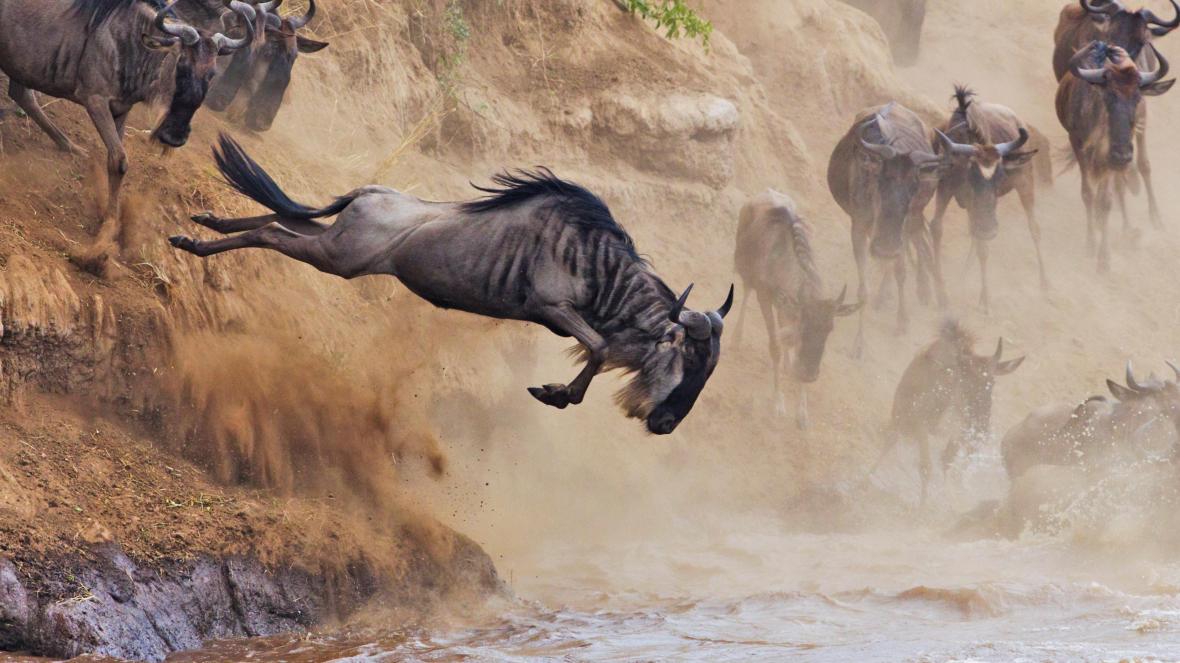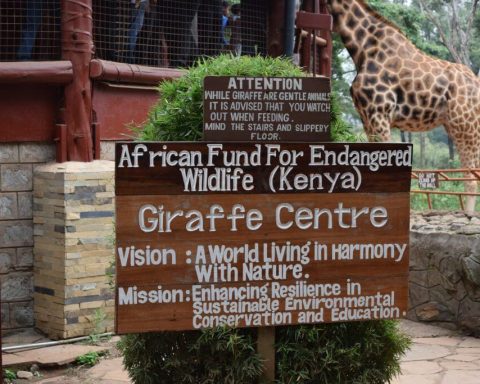The Great Migration of wildebeests in the plains of East Africa, Masai Mara is an epic, eye-catching, thrilling, intriguing, and spectacular trait of wildlife behavior, that attracts millions of tourists from around the globe.

The constant movement occurs during the month of July to October annually. The Migration is purposed to the search for pasture and water. It’s also the time of year known for the dramatic Mara and Talek River crossings. Since it’s drier this time of year, there’s less vegetation, making wildlife viewing much easier.
With 1.5 million wildebeest, 400,000 zebra, 12,000 eland, and 300,000 Grant’s and Thomson’s gazelles trekking from southern Serengeti to the Maasai Mara, the ‘great’ in ‘Great Migration’ may be a bit of an understatement. The constant year-long migration is an iconic natural phenomenon, the timing of which depends on environmental factors, the weather, and of course, the animals themselves. In short, the biggest mammal trek in the world follows the rains. The herds travel 800 kilometers clockwise in a circle through the Serengeti and Maasai Mara ecosystems in search of greener, mineral-rich pastures and water. The animals spend most of the cycle in the Serengeti in Tanzania but also spend several months trekking the bountiful plains of the Masai Mara.
The Great Migration of Wildebeests; A Wonder of the World.
Dubbed ‘the greatest wildlife traveling roadshow on earth’, the herbivores migration has earned global recognition, subsequently recommended as one of the Seven Wonders of the World.
Upon receiving justification of outstanding universal value by UNESCO’s World Heritage Convention; The annual wildebeest and plains zebra migration from the Serengeti to the Maasai Mara National Reserve earned the park the status of one of the Seven Wonders of the World as its’ the only migration of its kind in the world.
The Great Migration of Wildebeests Experience; Serengeti to Maasai Mara.
The Great Migration of a million plus wildebeests alongside other herbivores begins in the Serengeti, Tanzania northwards.
Along the way, the herds move in a clockwise motion, traveling from the Ngorongoro crater through the southern region of the Serengeti. The journey follows seasonal rains, some of which force them to pass through dangerous destinations.

The most anticipated event in the Great Migration is the arrival and crossing of the Mara River. This occurs around July to August with parts of September and again on their South around the last two weeks of October through early November.
The wildebeests follow the rains by watching the movement of the rain clouds. They know that where there is heavy rain, the grass they eat will grow soon after. Instinct impels them to follow the storm clouds across the Mara and Sand rivers.
The crossing of the Mara River is the climax of the Odyssey, a spectacle filled with drama, death, and endeavor. One of Kenya’s top natural occurrences in all Safari experiences.
Facts about The Great Migration of Wildebeests in the Maasai Mara.
-
It is the largest overland migration in the world.
This spectacular wild show in which millions of wildebeest and thousands of zebras and gazelles participate occurs every year in the East Africa region. It is astonishing to witness such large herds moving in the same direction at a time. More than 1. 5 million wildebeest, 300,000 zebras, as well as impala, eland, and Thompson’s gazelles, join the mass run in search of food and water. This striking overland migration occurring in the East African region makes the whole world stunned.
-
Wildebeest Don’t Have Any Natural Leader.
These wildebeests move with large herds from Serengeti the journey starts and through the Ngorongoro Conservation area, the herds move towards Mara River in Kenya. As there are no leaders of these migrating herds, sometimes these large groups got divided into small herds that cover the same track that the mega herds follow.
-
What drives them to the migration?
The dry season makes the vegetation concentration very thin which makes the wildebeests, zebras, and antelopes move in search of grazing land and water. This journey starts around March. The higher level of phosphorus and nitrogen that changes in touch with the rain is supposed to attract these migrating herds.
Read: Covid-19 stifles Mara wildebeest spectacle
-
The Group Consumes Around 5000 Tonnes Of Grass.
These migrating herds have the largest group on the earth that move together and run in the same direction in search of grazing fields and rolling lush grasslands. In this journey of 8,00km, these millions of animals graze almost 5000 tons of grass rain-plump grasses in the deep south of the Serengeti, and in the plains of Kenya.

-
They Cover 800 Km During The Migration.
A total of 800 km of the way is covered by the migrating herds that start their journey from the plains of Serengeti. It continues till they reach the open fields of Kenya and on the way, they cover the Mara and Grumeti Rivers. This round trip over two countries lets travelers witness a stunning view of large herds, battling disease, starvation, thirst, and fatigue. These migrating herds cover almost 40 km in a day.
-
The Crocodiles In River Mara Get Food After A Long Wait.
Until mid-July, the herds continue trekking across the duvet plains of the Serengeti, and after 3 months of the long run, tiredness, and hunger ultimately they reach the Mara river bank. Gathering all their courage they jump into the river to cross it, while the danger was waiting for them with open mouths. The crocodiles are another part of this food chain of migration, after waiting long months while these migrating herds cross the river the crocodiles got their feast. Sometimes it feels like the animals are committing mass suicide, however, where they try to overcome the obstacles as a single unit.
-
This Is Also A Grand Feast For The Predators.
During the migration, another attraction is the predators in action as they follow the large herds of zebras, wildebeests, and antelopes to hunt. A large number of animals died because of fatigue ness, shortage of food, or disease. but a large number of animals get fed by the predators, who desperately waiting for them. During this yearly migration, 250,000 wildebeest and 30,000 zebra are likely to be killed by predators.
Read: A Titanic Tourist Submarine goes missing in the Atlantic.
-
Nothing Goes to Waste In The Struggle Of Survival.
The Wildebeest migration is the life-support system of the animals of the East African region. While these mass wildebeest herds march toward Kenya in search of food, they are vigorously followed by the carnivores. Not only are the predators of the ecosystem the water animals too dependent on this great migration season. While the big predators eat and leave some portion of the bodies the small carnivores like the jackals and wild dogs feast on the remaining parts of the body. This migration just avails food from the insect to the king of the jungle. However, the run is a great example of “survival of the fittest’ it also showcases a great life circle.
-
You Can See The Amazing Cycle Of Life.
During these great migration days, you are going to witness a great cycle of life. Motivated by the chemistry of the earth, the large herds of Wildebeests, Zebras, and antelopes start running in search of grazing fields, this run is not just a journey of food search but a journey of life. Following their taste while this great movement happens they are followed by their eaters like lions, and leopards, and while crossing the river the crocodiles wait with wide-open mouths to hunt. This large life circle shows how these gazelles are dependent upon the grassland, and the predators dependent upon them to move their food systems.
-
It’s Not an Ages-Old Phenomenon.
This iconic show of large herds running exhaustingly in search of food is not an age-old tradition. There is nothing like genetically transferred from their ancestors. This journey surprisingly started in the 1960s and continues today. However, there is no actual data available for why this incredible journey started.






